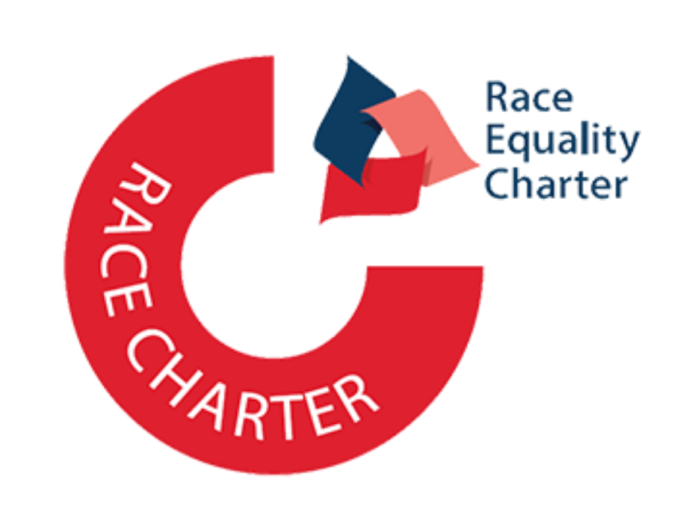Underlining and understanding the achievement gap between Black, Asian and Minority Ethnic (BAME) students and their white peers in higher education is essential when looking to improve provisions in HE. This article discusses strategies that are available for universities to implement when striving to improve outcomes for ethnic minority students.
It should be noted that there are some challenges when using homogenising language such as BAME. It can be seen as a generalising term that groups together all those that are not White British. The NUS [1] have recommended that universities disaggregate student ethnicity data, where student populations allow for this.
Outcomes for BAME students
We heard from several speakers that work closely with universities to ensure that the outcomes for BAME students in higher education are maximised.
Alison Johns is CEO of Advance HE, a member-led, sector-owned charity that works with institutions and higher education across the world to improve higher education for staff, students and society. [2]
In her work she highlights the percentage of UK domiciled undergraduate students that qualify with a first or an upper second-class degree, across ethnic groups.

There is a clear attainment gap between white and BAME students.
Additionally, it has been highlighted within a 2019 report, by Universities UK and the NUS that degree attainment isn’t the only issue faced by BAME students [1]:
- White British students are more likely to attend university. Although the number of BAME students attending university is increasing, there are still disparities in where the students study and in the likelihood of them dropping out.
- University dropout rates vary significantly, with Black students almost one and half times more likely to drop out than their white or Asian peers [3].
So, What is Being Done?
Alison Johns presented the REC (Race Equality Charter) [2]. This is a tool developed by Advance HE that aims to improve the representation, progression and success of Black, Asian and Minority Ethnic staff and students within higher education. It offers a framework for taking a strategic approach to race equality.
The methodology in the charter stipulates 4 steps:
- Qualitative and quantitative data collection over 3 years.
- Data analysis that identifies issues and challenges.
- Consultation that identifies potential reasons for existing issues.
- Action through specific, measurable, achievable, relevant and time-bound actions.
The REC has implemented an awards system that is used to recognise institutions and their efforts to improve outcomes for their BAME students.

[2] Race Equality Charter awarding system
Bronze award
Recognises a solid foundation for eliminating racial inequalities and developing an inclusive culture.
Bronze renewal award
Recognises ongoing commitment to tackling racial inequalities and progress of previous action plan.
Silver award
Recognises significant activity and achievement by the institution in promoting race equality and in addressing challenges across the whole institution.
The REC are yet to introduce a Gold Award. This may be because the conditions that would need to be met to achieve gold status are not attainable at this time.
In addition, the OFS (Office for Students) [4] set new national targets in 2018 to achieve equality of opportunity in higher education by tackling gaps in entry rates, dropout rates and degree outcomes between different groups of students:
- The gap in dropout rates between students from the most and least represented groups should fall from 4.6 to 2.9 percentage points.
- The gap between the proportion of white and black students who are awarded a 1st or 2:1 degree should drop from 22 to 11.2 percentage points.
Institutions are encouraged to sign-up for these strategies. Universities and colleges have begun to respond to these initiatives, developing their own access and participation plans.
The University of Portsmouth
Dr Harriet Dunbar-Morris, Dean of Learning and Education at The University of Portsmouth shared with us their strategy to close the attainment gap.
The primary objective of the project is to understand differing student perceptions of the quality of learning and teaching with a focus on how these perceptions differ by ethnicity. Furthermore, the plan wishes to create a research tool for future use more widely in the UK.
Employing the methodology of surveys and focus groups, courses with a high percentage of BAME students will be targeted to gather student opinions. The university is now prioritising the next steps which will see in-depth quantitative and qualitative analysis of survey and focus group data which will aid in practical changes within the university. These could include changes in policy, strategic emphases, practices, and resources.
Recommendations
The guiding principles of the REC provide an effective framework that could be used by institutions of higher education when responding to inequalities in their own systems:
- Racial inequalities are not necessarily overt, isolated incidents and can manifest themselves in everyday situations, processes, and behaviours.
- UK higher education cannot reach its full potential until individuals from all ethnic backgrounds can benefit equally from the opportunities it affords.
- Solutions to racial inequalities must focus on institutional culture change, avoiding a deficit model.
- Black, Asian and Minority Ethnic staff and students are not a homogenous group.
- All individuals have multiple identities, and the intersection of those identities should be considered wherever possible.
Joanna MacDonnell, Director of Education and Students at the University of Brighton emphasises that although universities are becoming increasingly vigilant of these factors, the rate at which the attainment gap is closing is still too slow.
‘The white-BAME gap and the white-black gap have on average changed by 0.3 percentage points between 2003/4 and 2018/19. At this rate of change, it will be 2070/71 when the white-BAME awarding gap will close and 2085/86 when the white-black awarding gap closes’ [6].
It is recommended that institutions continue to subscribe to action plans such as those of the REC and the OFS to speed up the improvement of BAME outcomes in higher education.
[1] The Universities UK, National Union for Students. 2019. Black, Asian and Minority Ethnic student attainment at UK universities #closingthegap
[2] Johns, Alison. 2021. CEO of Advance HE. Race Equality Charter
[3] Keohane N, Petrie, K. 2017. On course for success? Student retention at university.
[4] The Office for Students. 2020.
[5] Dunbar-Morris, Harriet. 2021. Understanding Differing Perceptions of Learning to close the BAME Attainment Gap [6] MacDonnell, Joanna. 2021. Chair of Improving outcomes for BAME students in Higher Education 2021 conference.
Register FREE to access 2 more articles
We hope you’ve enjoyed your first article on GE Insights. To access 2 more articles for free, register now to join the Government Events community.
(Use discount code CPWR50)




